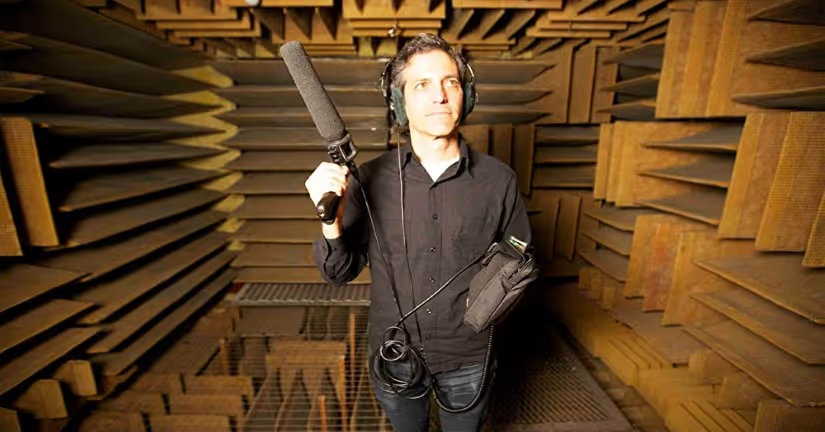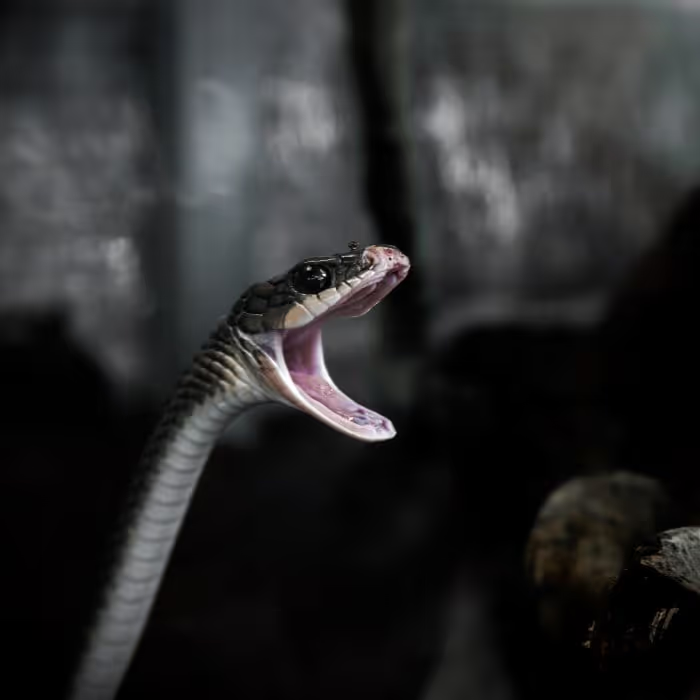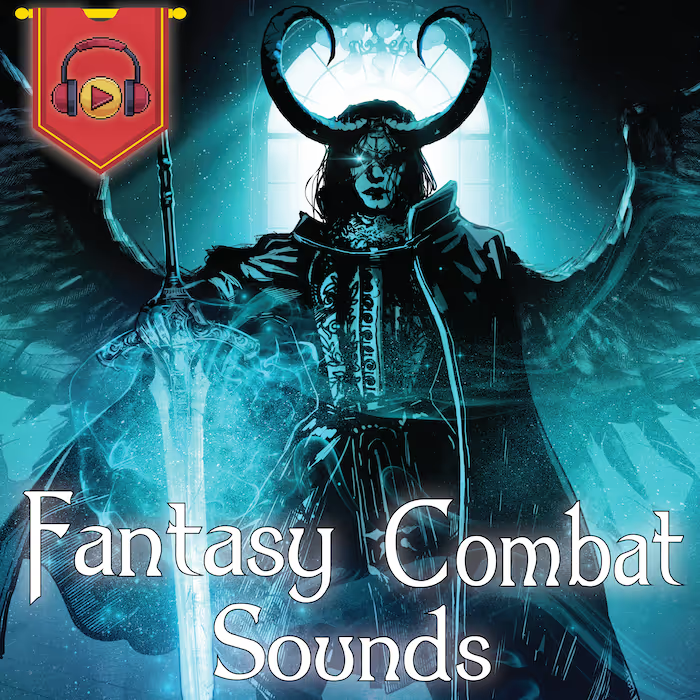The 2022 Sundance Film Festival is well underway, and one must-see film is writer/director Sam Green’s immersive documentary 32 Sounds, which explores the elemental phenomenon of sound. The film is presented in two forms: a Live version and a Virtual version, both intended to be experienced through headphones. For the Live show, audiences are treated to live narration by Green and live original music by JD Samson. The Virtual version is designed to be a completely immersive at-home experience.
Green wisely teamed up with Oscar-winning sound designer Mark Mangini at Formosa Group, known for his sound work on films like Dune, Mad Max: Fury Road, Blade Runner 2049, The Fifth Element, and more. Throughout his 46 year career, Mangini has helped to elevate the status of sound and its role as a powerful storytelling tool in filmmaking.
For 32 Sounds, Mangini was able to offer both philosophical and technical insight, helping to guide Green on how to craft a truly immersive experience — like recommending the use of binaural recording and playback via headphones.
Here, Mangini talks about his role as sound designer on the film, his two-year collaboration with Green on the project, their decision to use headphones for playback instead of a more traditional cinema sound system, and more!
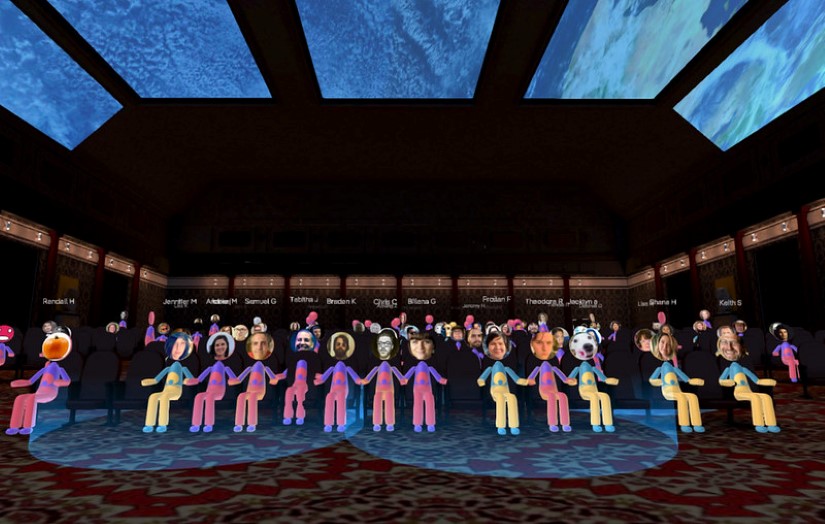
The description for the documentary 32 Sounds says it explores the elemental phenomenon of sounds and its power to bend time, cross borders, and profoundly shape our perception of the world around us. Intriguing! As the sound designer, what did writer/director Sam Green ask of you in helping to create this experience?
Mark Mangini (MM): Sam asked me to do something I’ve never been asked to do: wax poetic, think philosophically, and discuss sound as narrative and not make any sounds.
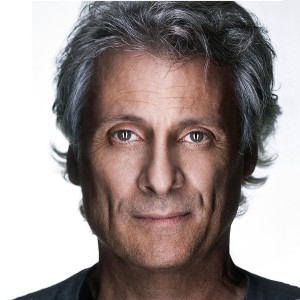
My engagement as a sound designer initially was not to add sound or create sound (although I did do that); it was to explore sound with him in the bigger context of creating the piece itself, as he was photographing, writing, and exploring the topic of sound and how we perceive it. Sam wanted to collaborate with someone who had experience working with sound, and have the ability to consult on a regular basis with him as a sounding board for the efficacy of the ideas he wanted to pursue.
We spent two years talking extemporaneously about what I thought about sound, things that I listen to, how I listen, and what I thought about his sonic goals. It was a two-year conversation and I didn’t edit, record, or even mix any sound that entire time.
At the end of those two years, Sam had a great structure for the project that helped focus his ideas on how sound lives in the universe that we perceive and how an audience would experience those ideas.

In addition to your philosophical input for the film, did you also create one of the 32 sound experiences in the film? Or, did you have a hand in editing the tracks or working with the tracks that dir. Green created for the film?
MM: Yes and no. I had more of a meta-level impact initially. One of the first things we talked about – and something that has mystified me for years – is how sound is captured in documentaries. It’s odd to me that documentaries make a tacit claim to be a representation of the truth, especially in vérité. Yet, I found that many documentaries are captured with monaural sound. One either puts a lav out, or a boom pole with a shotgun mic or (god forbid) a mic on the camera. That’s all single-channel, monoaural sound. That’s hardly a representation of what was experienced sonically. In fact, it’s a disservice to the viewer (the listener) to what was actually heard when that scene was captured. We hear in 360-degrees.
It’s odd to me that documentaries make a tacit claim to be a representation of the truth, especially in vérité. Yet, I found that many documentaries are captured with monaural sound.
This was one of many philosophical discussions we had about capturing sound immersively, capturing the way the ear hears. To that end, a good deal of our audio was captured binaurally – the closest we can come to reproducing the way the ear actually hears. Fortunately, this is a developing trend in documentaries.
We also captured production and wild sound in Ambisonics, an immersive audio format that can be decoded to a binaural signal. By being part of this decision-making in pre-production, I was able to materially influence how the audience would eventually experience the project.
…I encouraged Sam to consider adding a subwoofer to the audio playback system to augment the headphone experience.
Consistent with our zeal to be as authentic as possible and knowing that we were going to present this project (for the most part) to the listener on headphones, I encouraged Sam to consider adding a subwoofer to the audio playback system to augment the headphone experience. I was concerned that the listener would not get the benefit of the full audio spectrum without it. Sam was not aware that headphones could not fully reproduce bass frequencies or sub bass frequencies below 80 Hz. I encouraged him and the team to build the live performance with the ability to reproduce those frequencies so that the audience would have a very full and complete audio experience. This technical consultation was really important in crafting the sonic experience of 32 Sounds.
Sam would also present works-in-progress to me. He would send sketches and rough cuts and we’d talk them through in terms of sound. Through those discussions, sound ideas would be elevated to a higher status in the project or might be discarded because there was no way to sonically reproduce what he heard in his head or wanted to achieve in that sequence.
Two weeks ago, Sam came to L.A. for the final mix of the Virtual version, which premiered at Sundance this past week. We worked in my studio on headphones with the production sound — much of which was captured immersively and were sounds that Sam and Nels Bangerter (the film editor) had collected and recorded wild.
We spent a week and a half mixing the Virtual version, all on headphones, which was a first for me.
For the sound edit proper, much of the heavy lifting was done by Bob Kellough, and I did additional editing and design work as we mixed. The non-sync audio was either from my library, their libraries, and purchased and licensed libraries so that we could reproduce the most immersive experience possible. We spent a week and a half mixing the Virtual version, all on headphones, which was a first for me.
The project was always designed to be a 2-channel binaural headphone experience even though there is a live component for the Live version (not to be confused with the Virtual version where all the live music and voice elements are pre-recorded). Sam is going to travel this around the country, performing in live theaters and cinemas.
For most all those Live presentations, the audio will be broadcast to hundreds of headphones that will tour with the show. We are using a wireless, non-compressed FM-based transmission system so the audience has a very full aural experience. We would lose the immersive binaural experience if the audio was reproduced over loudspeakers, or a P.A., or even cinema speakers.
For most all those Live presentations, the audio will be broadcast to hundreds of headphones that will tour with the show.
Dolby Atmos and other immersive audio formats are great but they are non-binaural and can only reproduce a loudspeaker-based planar experience. Sound is emitted from planes (walls) outside and away from you, and the sound emanates from those planes. No wall-based loudspeaker system can reproduce “proximity,” the feeling that sound is right next to your ear.
One can reproduce proximity with very sophisticated three-dimensional audio reproduction technologies like BACCH 3D or binaurally. With these technologies, one can make the listener feel as though someone is whispering right in their ear and not whispering out there, wherever the speaker is. This is why we chose the headphone experience, to create a very believable immersive audio presentation.
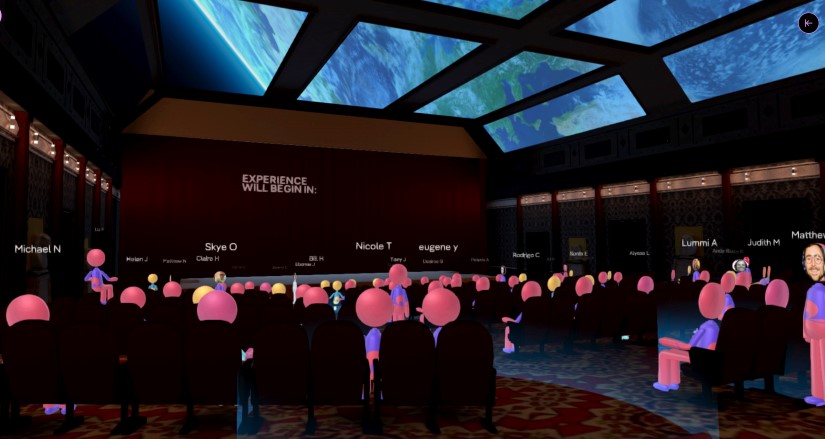
The headphones for this film are they open-backed headphones, or closed-backed? What style works best for playback of this film?
MM: We don’t make a recommendation, only that the audience should wear headphones. We go to great lengths before the show rolls to encourage the audience to use headphones and not speakers, and to have them ready and make sure that they’re on correctly (L side is on the left ear); otherwise, they will not have the optimum experience.
We don’t recommend open-back versus closed-back although open-back headphones do tend to reproduce a binaural signal better than closed-back.
We don’t recommend open-back versus closed-back although open-back headphones do tend to reproduce a binaural signal better than closed-back.
That said, we are touring with hundreds of wireless closed-back headphones and an FM transmission system made by Silent Disco King (who gave us a very attractive price to help out the cause). We will clean them religiously between each show, and they’ll be waiting in the seats in each auditorium we play in.
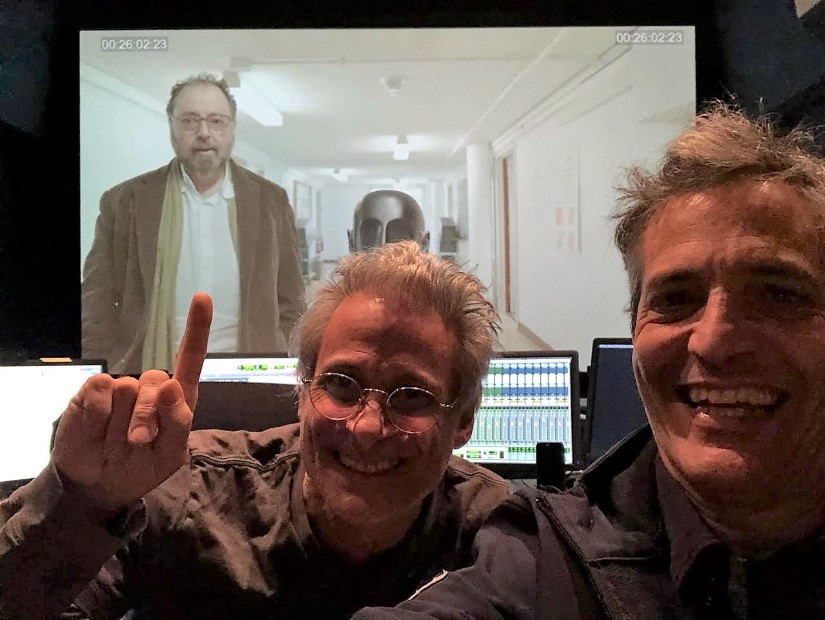
What was your biggest challenge in working on 32 Sounds?
MM: It’s the challenge that always exists: how to tell stories with sound, how to use sound effectively to give the audience a unique and memorable experience.
Working in binaural exclusively was a challenge. I was familiar with binaural audio but had very little hands-on experience using it. I did a great deal of research to prepare myself for this. I needed to find useful tools that could binauralize sounds that were not binaural and I needed to retrain my ears to hear spatially from two reproducers.
This was my first time designing a 2-channel binaural mix and I was doing it over headphones — way out of my comfort zone.
For 46 years I’ve been working in traditional cinema sound, listening to planar speaker reproductions. This was my first time designing a 2-channel binaural mix and I was doing it over headphones — way out of my comfort zone. It was a terrifying prospect to me, having to rethink the way that I listen.
In fact, Sam and I spent that week and a half together in my studio with our headphones on the entire time. It turned out to be really fun and educational. I got to exercise new muscles in that process.
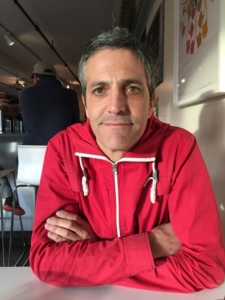
What do you hope audiences will take away from the experience of 32 Sounds, in the way that they think about sound?
MM: First and foremost, I hope the audience enjoys the experience.
Secondarily, that they realize that sound — often considered a secondary sense — isn’t given enough thought. It might encourage people to listen a little more often and a little more critically. Sound informs so much of the decisions that we make consciously and subconsciously every day.
A big thanks to Mark Mangini for giving us a behind-the-scenes look at the sound of 32 Sounds and to Jennifer Walden for the interview!

